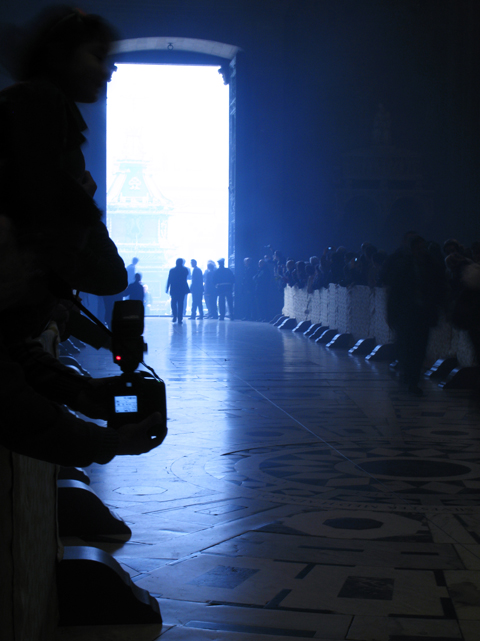
On Easter Day in Florence there is a tradition called the Scoppio del Carro – the explosion of the cart. After the mid-morning mass the priest lights a dove-shaped fuse at the main altar of the duomo. The ‘dove’ then flies along a zipline and out of the main doors of the cathedral into a 30-foot high cart filled with fireworks. What results is a glorious twenty-minute explosion spectacular.
I was there in 2010. Unable to get into the Duomo square, I ended up inside the cathedral. At first I was disappointed as it meant that I didn’t have a good view of the fireworks. However, as the explosions continued, the air around the cart filled with smoke and the inside of the cathedral was plunged into an other-worldly blue cloud. This picture was taken after the final fireworks had done their thing and the doors were about to close, to the accompaniment of dramatic organ music.
For some, blue is the colour of sadness. For me it will always be fireworks and the scent of cordite in an Italian cathedral.
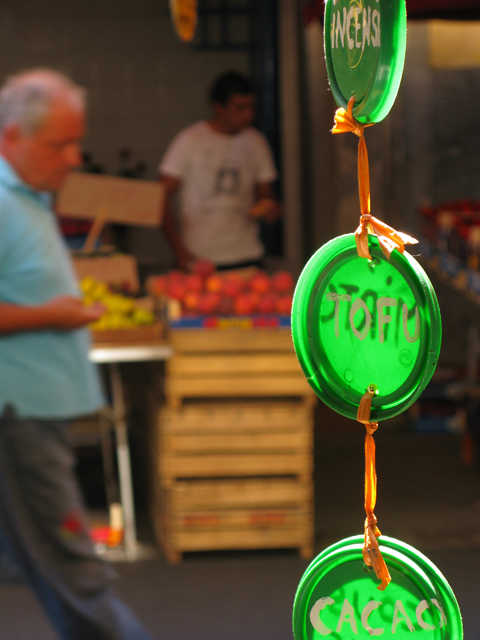
Walking down from the mainland of Siracusa, over the bridge onto Ortigia island, the market is almost the first thing that you see in the morning. Traders tout for business alongside permanent shops, and the area hums with activity.
The shop from which I took this picture was stuffed to the gills with exotic ingredients which can be hard to find in Italy. However, the thing that caught my eye was the inventiveness of the signage: green tub lids scrawled with what looked like Tipp-Ex. The thin plastic floated in the breeze and let the light through until it became translucent, like one of those violently coloured fruit lollies that you used to suck as a kid. In a moment of synesthetic sense memory, I tasted lime and my mouth started to water.
Green is the colour of childhood treats and excitement.
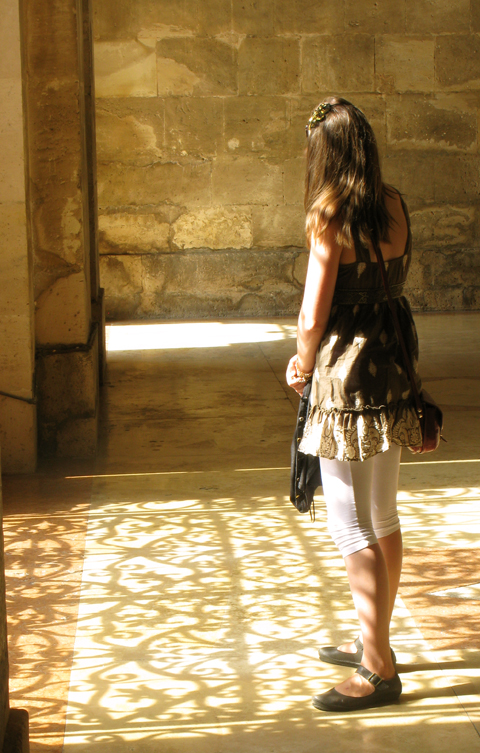
On the eastern side of Sicily, where I live, yellow is in short supply. We sit at the foot of Etna and our city is built of lava stone. Strong and impressive, yes, but also grey and dark. Move to the south and west of the island, however, and the stone becomes lighter. The cathedral on Ortigia island, just off Siracusa, is dazzling white. Outside, it’s too bright. You become blinded by the whiteness of it, and the sun reflecting back. Find the shadows, however, and you find beauty. This picture was taken in the sheltered porch of the cathedral: the crossing ground between outside and in. Here the light mellows as it dances through the ornate iron gates, blending with the cool darkness inside and casting shadows that tempt you in with their softness.
Yellow: a play of light and shade; the colour of sunlight and warmth.
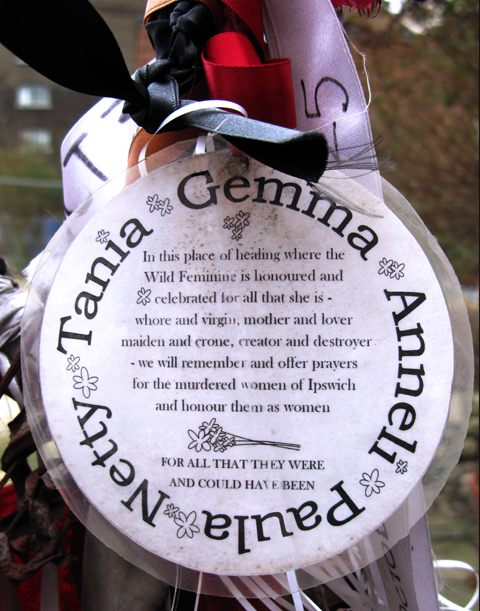
For tonight in Hell, they are tolling the bell
For the Whore that lay at The Tabard
And well we know how the carrion crow
Doth feast in our Cross Bones Graveyard.
– John Constable-
The Cross Bones graveyard in Southwark, London was originally a single women’s (for which read: prostitutes’) graveyard in the 1500s, when Bankside was a seething mass of debauchery. In later years it became a plague pit and then a pauper’s burial ground before being closed for health and safety reasons in the 19th century. The health and safety in question was that of overcrowding: in the 1990s, when London Underground excavated part of the site, they removed some 148 skeletons, which were estimated to be only 1% of the total number of people bured there. It’s a place that holds a lot of ghosts.
Nowadays it is concreted over and locked behind high iron gates. The ghosts live on in people’s minds, however, and the gates have become a shrine of sorts. Regular vigils are held here, and people leave offerings to and memories of the dead: not just those in the graveyard, but any and all ‘outcast dead’.
This memorial caught my eye when I visited in February 2009. It commemorates the five women murdered by the serial killer Steve Wright in Ipswich in 2006. I remembered the news coverage of the case and how it had made me angry at the time. As the case went on the media hung like terriers onto the fact that the five women had the same job – prostitute. What was sometimes forgotten was that they were, above all, women with names and families. Ultimately, they were killed unlawfully. Whatever their lifestyle, they were the victims in this case.
White: the colour of neutrality and of innocence.
R.I.P. Gemma, Tania, Anneli, Paula and Annette.
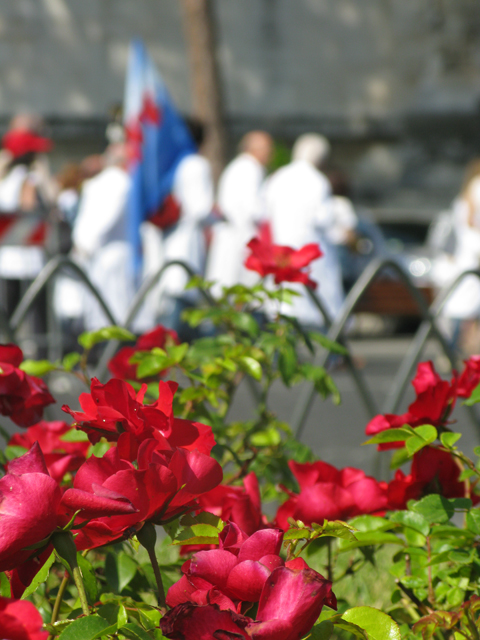
Red is sometimes the colour of passion; of lust. I took this picture in Rome in May of this year. The people in the background are part of a protest march. I started to take pictures because I liked the juxtaposition of bright red flowers in the foreground and banners in the background. More focused on the pictures than the protest, it took me a few minutes to realise that they were protesting against abortion.
Many of the protesters were from the Church: I noticed dog collars and wimples aplenty. The group you see here walked quietly. Their presence was enough for them to make their point. However, they were followed by a group of young men wearing black. They chanted and punched the air as they walked: “ogni aborto è uno più morto” (every abortion is one more death). Their grins sickened me. Theirs was not a protest from a deep-seated sense of doing right, but for the rush of kicking the traces.
Red, on this occasion, was the colour of anger.







9 Responses to Capture the Colour